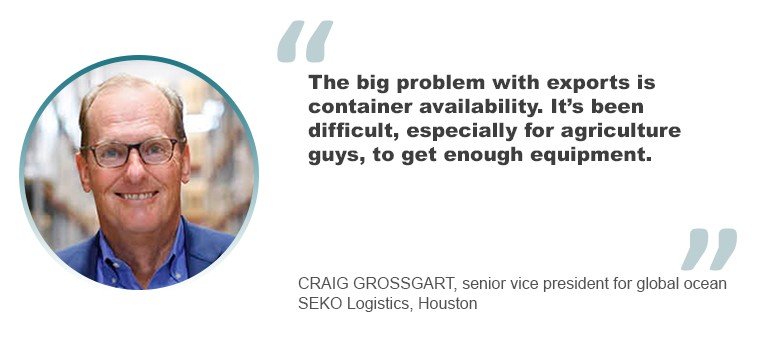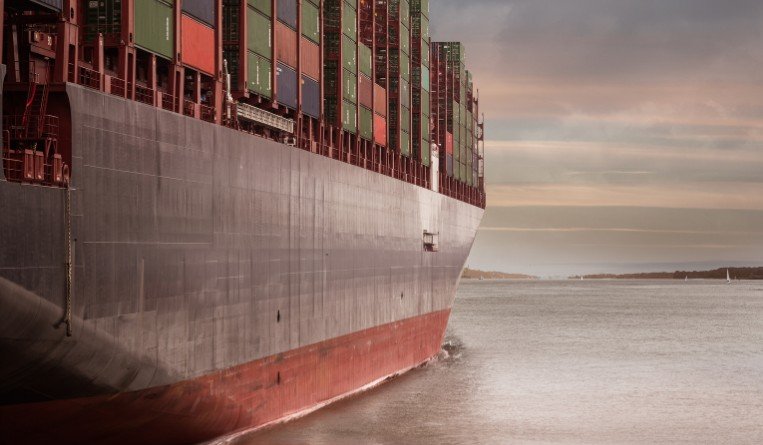In early November, several North American fresh produce organizations issued a joint statement calling for immediate government action to tackle ongoing supply chain disruptions that impact food systems and exports. This came at a hearing on the agriculture supply chain held by the House Agriculture Committee in the U.S. Congress.
The statement listed a litany of problems, from port congestion, delays and lack of equipment to labour shortages and surging costs.
For many U.S. exporters of agriculture goods, problems this year have extended all the way from crops to shipping destinations. Some crops were affected by adverse weather conditions, notably the heat wave that hit the western U.S. in the spring. However, a bigger problem has been a shortage of labour to pick crops and pack them for shipment, one forwarder remarked.
At the Agriculture Transportation Coalition’s conference in October, some shippers stated that they could be shipping more goods in a timely and less costly fashion if it were not for problems with international supply chains.
The problem is not unique to U.S. agriculture shippers. According to a report from the Council of Coffee Exporters of Brazil (Cecafé), the nation’s exports of green coffee fell 27% in August from a year earlier because of difficulties finding containers and vessel space. This cost the industry about US$500 million in lost sales, Cecafé estimates.
Like their Brazilian counterparts, U.S. agriculture exporters have been struggling to obtain containers.
“The big problem with exports is container availability,” observed Craig Grossgart, senior vice president for global ocean at SEKO Logistics in Houston. “It’s been difficult, especially for agriculture guys, to get enough equipment.”

Availability of trucks and trailers to move produce to ports and airports has been another hurdle, says Chris Connell, senior vice president for perishables, North America, at Commodity Forwarders in Los Angeles, a Kuehne+Nagel company that specializes in perishables logistics.
Planning for truck moves has been hampered by the erosion of schedule integrity of trans-Pacific vessel sailings. Exporters have complained that the ocean carriers’ earliest return dates for containers, which specify the windows when containers can be delivered to them without incurring storage charges, have been in constant flux.
It has not helped that vessel capacity itself has been reduced. U.S. shippers have accused ocean carriers of rushing empty containers to Asia rather than waiting to load exports in order to take advantage of the much higher rates on the eastbound trans-Pacific lanes.
Shipments to China have faced elevated scrutiny at destination after the Covid-19 outbreak in Dalian was linked to cold chain foods. Already before this, perishables shippers had complained about delays in China due to inspection of shipments.
This situation appears to be poised for further deterioration. On October 27, diplomats from seven countries wrote to the head of China’s customs authority asking for a delay in the implementation of new regulations on food imports that are scheduled to come into effect on January 1, 2022.
Under these regulations, producers of goods from 18 specific categories would require recommendations from the authorities of their home countries, and others would have to self-register on a newly launched online platform. Registered firms will be given special codes that must be attached to packaging.
The diplomats from those seven countries – which include the United States, Japan and the United Kingdom – voiced concerns over lack of clarity on several aspects of the new regulations, including which products are subject to them and what specific actions foreign governments would have to take.
They asked for a delay in the roll-out, arguing that until these points are clarified ships loading goods headed for China could not be sure whether or not they could offload their cargo at destination.
Problems with extended inspection times in China have prompted some exporters to shift their traffic to other markets, but China especially remains too big to ignore for most of them. Last year, the country’s largest pork processor imported 700,000 tons of meat, of which 70% was shipped from the U.S. Earlier this year, the company announced that it would increase its meat imports over 2020 volumes, as a renewed outbreak of swine fever was affecting local supplies and price levels.
Robust demand in the domestic market has caused producers to reduce their exports and sell more in the U.S., noted Connell. This has been reinforced by the supply chain disruptions as well as by the elevated cost of transport.
On top of this, prices of perishables themselves have risen steeply. A recent rally in crop futures pushed prices to the highest level since mid-2014. The price of corn doubled, while soybeans rose 80% and wheat 30%. This spells painfully higher prices for consumers, even before the elevated cost of logistics is factored in.
Even without the higher produce prices, the cost of international shipping has become an obstacle for many commodities, especially in air freight. If the sticker price of a fruit rises too high, consumers will turn to other choices, Connell said.
Ian Putzger



